Made in Ireland / Ireland
Isle be back
Neglect of the Irish design industry has seen signature brands all but disappear. Now, with the help of the Irish Design 2015 programme, a regeneration is underway and Ireland is ready to show the world its talents.
Island nations often have problems opening themselves up to the world, which is what made the visit of six Scandinavian design experts to Ireland in the early 1960s so bizarre and yet so important. The team – which included three Danes, one Swede and one Finn (Kaj Frank, a design director from tableware brand Arabia) – were invited in 1961 by Córas Tráchtála Teoranta, the body responsible for improving standards of industrial design on the Emerald Isle. The Scandinavian Design Group was given a tour of Ireland’s craft capitals: the tweed being loomed in the hills of wild Donegal; glass being cut and blown in Waterford; linen in the north. It had been charged with suggesting how Irish craft and applied arts could be improved; how Ireland could export its assets to the rest of the world, just like Sweden, Denmark and Finland were so good at doing at that time. Their solution? There were plenty of ideas, including using film as propaganda and teaching department store staff about the particular qualities of what they were selling. But crucially they suggested that Ireland host a year of design to showcase to the world all that made it special.
That was 50 years ago. “And now it’s finally happening,” says a smiling Karen Hennessy, the sprightly chief executive of the Design & Crafts Council of Ireland. She is stood in the grounds of St Andrews, a converted church in Dublin that will soon host the team behind Irish Design 2015. It’s a year-long programme of events that will take Irish design – fashion, furniture, craft, architecture, even animation – to the trade fairs and weeks and biennales of the world. “We’re ready to take on the world and shine a spotlight on Ireland’s creative talent,” says Hennessy.
If it sounds like a PR stunt that’s because it is – but it’s a necessary one. The ups and downs of the Irish economy have been matched by its design and craft industries: the occasional boom and a lot of lag. But the times they are a’changing. The week monocle visits, the European Commission announces that it predicts gdp growth of 3.5 per cent for Ireland in 2015, meaning it is set to remain the fastest-growing economy in the EU. And that’s not all: in various pockets of the country, a generation of young studios is fighting back and joining an older generation skilled in the traditional crafts that have long made the island special. They are creating a new look for “Made in Ireland” and it’s about time the world took notice, just as the Scandinavian Design Group wished 50 years ago.
“Growing up in Ireland you have two brands: Waterford and Guinness,” says Anike Tyrrell, owner of J Hill’s Standard, a glassware brand launched at Milan’s Salone del Mobile last year. “Glass is everywhere.” That was certainly once the case in the southern town of Waterford where Tyrrell is now talking to monocle. In the 1970s more than 3,000 staff members populated the glass factory; it was one of the best-paid jobs in the country. But in January 2009 the factory closed. As a result, the town was brought to its knees. Waterford had represented one of the few Irish examples of a cottage industry that had been taken into large-scale manufacturing but they killed the golden goose when they brought in machines and sourced offshore. J Hill’s Standard’s two collections were designed by heavyweights Martino Gamper and Scholten & Baijings (“It was like calling up Picasso and asking if he could do you a picture,” says Tyrrell), with branding by London studio Made Thought. The pieces are cut and polished at Emerald, one of the last remaining workshops in Waterford. With Tyrrell’s background in rural enterprise, what’s the aim? “Not to just restore the industry,” she says, watching an ex-Waterford worker cut a jug designed by Martino Gamper, “but to expand it and have depth to it, both designers and manufacturing.”
At the other end of the country we meet Kieran Molloy. He is the sixth-generation director of Molloy & Sons, one of the last remaining weavers in Ireland’s tweed capital of Ardara in Donegal. The mill produces for everyone from Beams to J.Crew to Barbour. Trained in industrial design, he joined the family business five years ago after losing his job. With all the guts of a 29-year-old who’s seen a bit of the world, he immediately set about expanding the export business. He ventured out from Molloy & Sons’ idyllic spot high in the Donegal hills to chase new clients in Tokyo and then rebranded and introduced new colours and patterns.
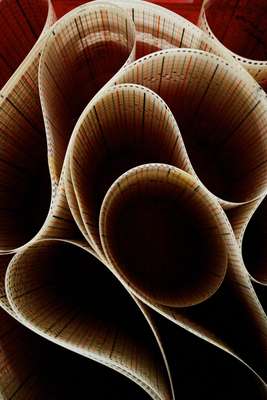
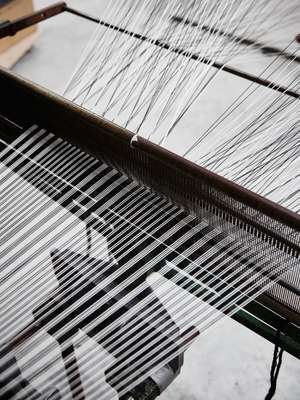
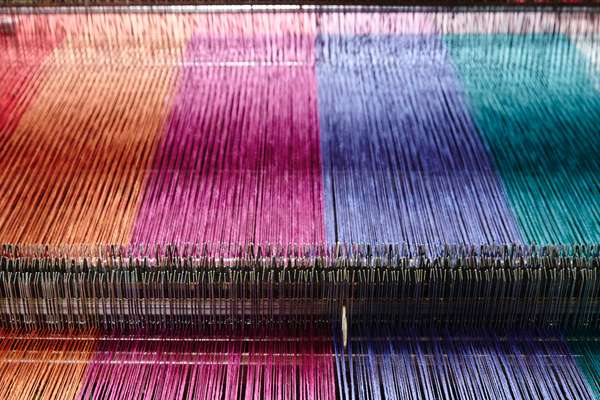

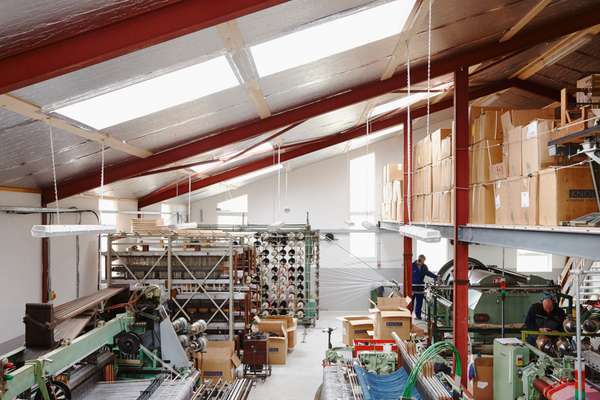

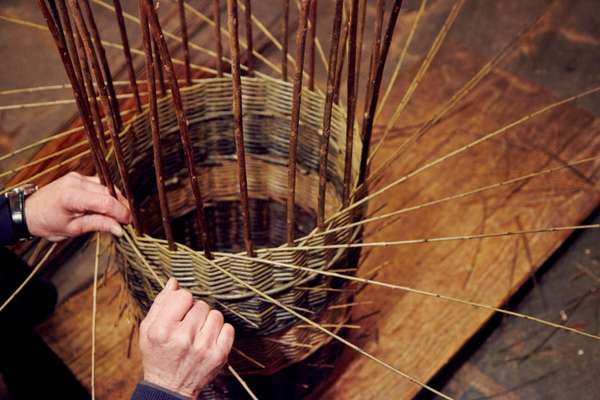
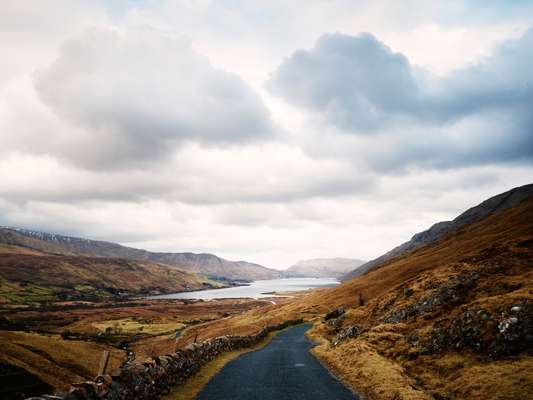
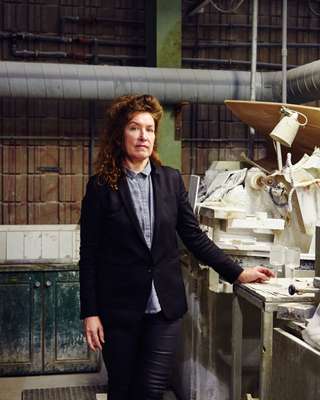
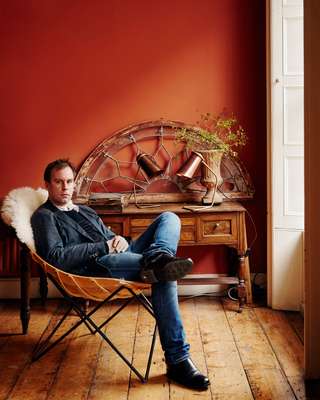
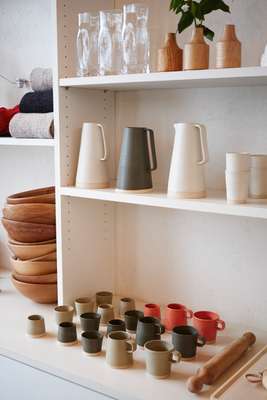
When monocle visits, swatches are being made for Molloy & Sons’ first foray into cotton linen. “We’re trying to be seen as something more relevant and different,” says Molloy over lunch with his mum, dad and brother in their house next to the factory. But Molloy & Sons isn’t the only one: the same is happening at Mourne Textiles in County Down, Cushendale Woollen Mills in Kilkenny and Foxford Woollen Mills in County Mayo. Finer textiles you won’t find.
One of the major problems the industry in Ireland has always faced is its inability to applaud itself. In Waterford, the highly refined skills of its craftsmen were ignored and machines brought in. In Donegal, the unique tweed (with lots of colourful flecks) was never recognised at all, quite literally. “It’s not protected in the same way Harris Tweed is. Italian and British looms can make it,” says Molloy. “The Scandinavians actually suspected it should be protected [in their report] when 1,000 people were working in the industry. Now there are just around 100. Now it’s disappeared.” Should the government finally learn its lesson and protect it? “It’s hard to see it happening but it would be fantastic if it did.”
Yet it seems that the government is taking notice of its broader design industry. As part of Irish Design 2015, the Design & Crafts Council has undertaken an audit into the Ireland’s manufacturing capabilities to assess how this spurt in design could be monopolised with actual production. Results will be out later this year but it’s a promising start, especially in textiles. “There is an appetite to bring back manufacturing in the textile area,” says Hennessy at Design & Crafts Council of Ireland. “But this needs to be supported with skills development in areas such as pattern cutting and tailoring.”
This audit shows one of the underlying objectives of hosting Irish Design 2015. It’s not about marketing, it’s about something more vital: realising how important design is to the economy. It’s about jobs. An estimated 60,000 people work in the sector, providing employment in both urban and rural areas. The animation (an Irish strength: Cartoon Saloon was nominated for an Oscar this year), graphic design and craft sectors contribute approximately €500m each to the Irish economy. That could grow, as the government seems to understand.
The idea of designating a year for celebrating and promoting Irish design emerged from the Global Irish Economic Forum in 2013. Tellingly, Irish Design 2015 has been funded by the jobs and enterprise division of the government, not arts and culture. “We want to encourage investment in design as a key component of innovation and competitiveness and ensure that design is central to the government’s enterprise development and education policies,” says Hennessy.
Upscaling manufacturing will only happen if there is an appetite for Irish design. One man who knows the role that good looks play in helping to restart a manufacturing base in Ireland is Jonathan Legge. In 2012 he set up online retailer Makers & Brothers with his brother in a shed next to his parents’ house in Dublin. The company started life as a vendor of craft pieces found across Ireland but quickly turned into an almost philanthropic project.
Legge sources 65 per cent of his stock from a network of more than 40 Irish craftsmen. Crucially, he works with many of them to help update what they make – and what in many instances they have made for years – for a global audience. Ireland’s art director you could call him, although the softly spoken Legge would never admit that himself. “We do not claim to be reinventing the wheel but we are making it so much better and doing so with our own vision,” he says. “Manufacturers see design as a dirty word. It’s about showing them how to freshen up. It’s relationship-building,” he says of his mission.
It’s people such as Legge and Tyrrell at J Hill’s Standard and Kieran Molloy at Molloy & Sons who will be instrumental in elevating the perception of Irish design. The skills and expertise have always been there, it’s just a bit of work on the look and feel that is needed. Take The Irish Handmade Glass Company for example, which was opened in 2009 by four ex-Waterford glassblowers. When monocle visits their open studio in the centre of Waterford they are blowing some rather questionable glass cats and pink elephants. Hugely popular with tourists by all accounts but not a patch on the sleek, simple tumblers Legge worked on with them to design for Jameson Whiskey.
Ireland is lucky, if you’ll excuse the cliché, in the fact that it has no “house style” to speak of, nor any big names to live up to (Eileen Gray is Ireland’s lone design icon). Try to find a Danish designer who doesn’t credit Arne Jacobsen or Hans J Wegner as an influence – or burden. The Irish aesthetic is rooted in craft and the handmade and that remains its strength. It’s hard to find more covetable items here than the woven willow baskets made by Joe Hogan on the shores of Loch na Fooey since 1978, or the wooden stools bashed together by James Carroll in County Wicklow. But the past can make the present, and young Irish designers are learning to take the materials and skills embedded in this island on the Atlantic and do something new with them (see box on page 198). Not just Legge and his Makers & Brothers collaborators, not just J Hill’s Standard with Martino Gamper but many others as well. Made in Ireland but in some ways not really Irish at all.
The Tweed Project is the perfect example: a Galway-based fashion brand set up recently by restaurant owner Aoibheann McNamara and costume designer Triona Lillis. Alongside trousers and scarves of Donegal tweed they also make shirts using linen from Belfast and are committed to adding style to tradition. The Irish Margaret Howells, if you will: old skills, new look. “We want to transcend Ireland, Irishness and ‘tweeness’,” says Lillis. “We want to bring Irishness out in a contemporary way.”
In many ways the similarities between Scandinavia and Ireland run deep. The watery, wonderful landscapes of both are home to sparse populations, an aesthetic rooted in the applied arts and a generation of skilled craftsmen. Ireland and the Nordic nations have a rich heritage of ceramics, woodworking and glassmaking. Where Sweden and Denmark (and Finland, too) excelled was in realising their strengths and pairing them with contemporary design in the postwar period – then upscaling manufacturing to meet the world’s appetite. Ireland never managed to do so, against the advice of the Scandinavians, and it has paid the price.
In their report reflecting on what could be gained from hosting a year of design, the Scandinavians said this 50 years ago: “We feel that, if undertaken, this very large project would not only have immense beneficial effects on the country itself but would be a noteworthy contribution from Ireland to western European culture.” With a bit of that Irish luck, now is finally the time.


